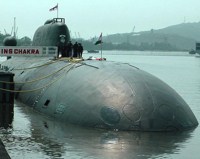
Friday’s ministerial meeting in Almaty, Kazakhstan, of the Istanbul Process will bring together representatives of 14 regional countries and 16 others to discuss efforts to stabilize Afghanistan in the aftermath of the 2014 withdrawal of Western forces from the country. As the drawdown nears, regional powers are growing increasingly worried. Russia, India, Pakistan and China recognize that the departure of Western forces could allow a resurgence of the Taliban, threatening Afghanistan’s economic and political development and spreading ripples of insecurity throughout the region. Unfortunately, the Istanbul Process is focused on vague confidence-building measures, rather than concrete proposals for Afghan reconciliation. […]



